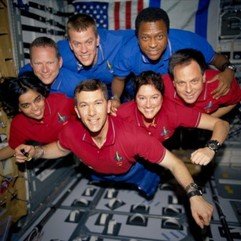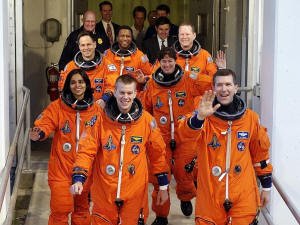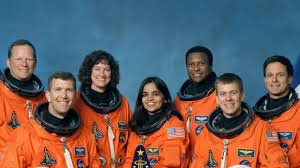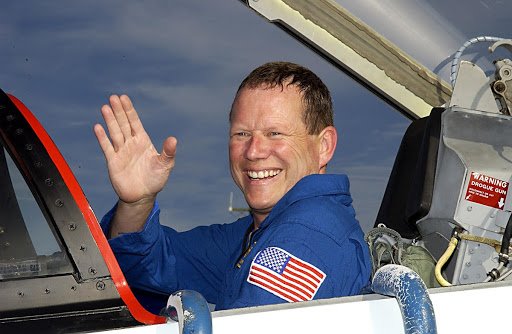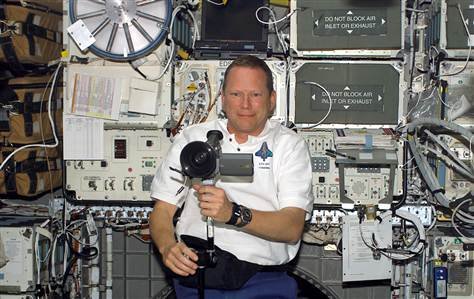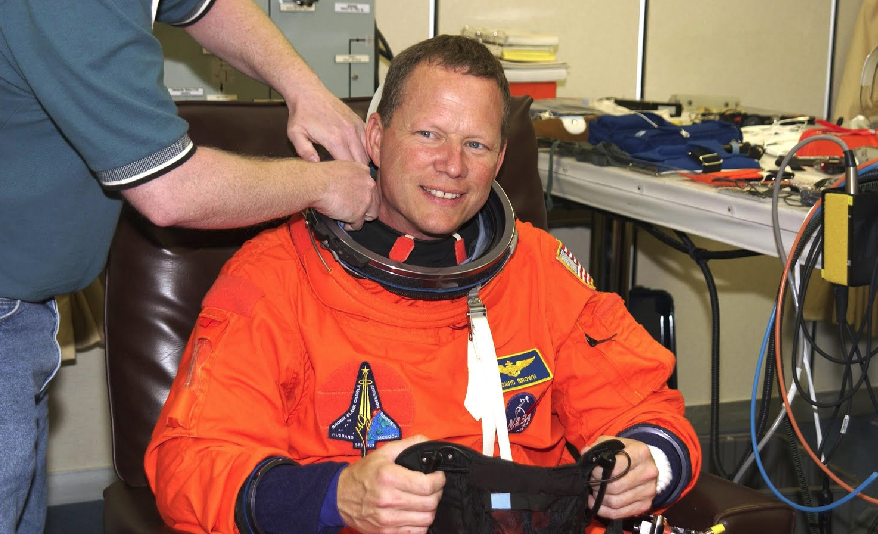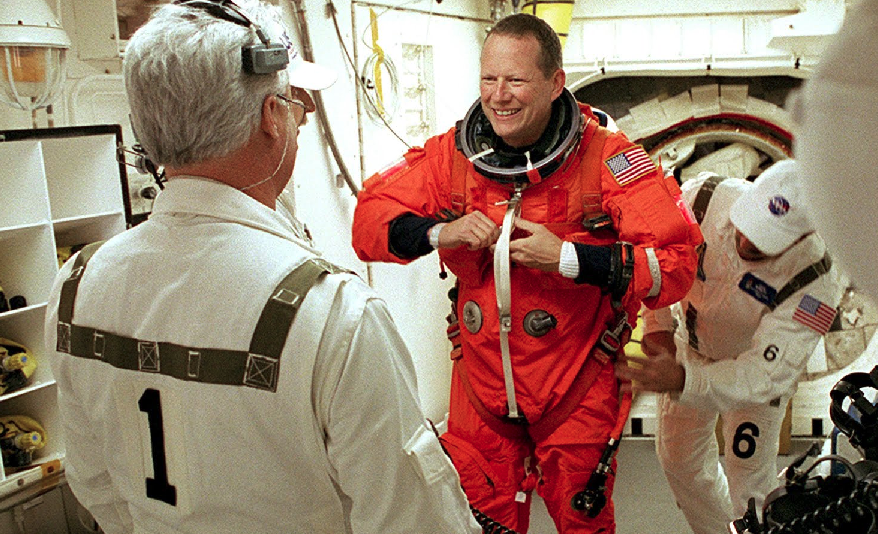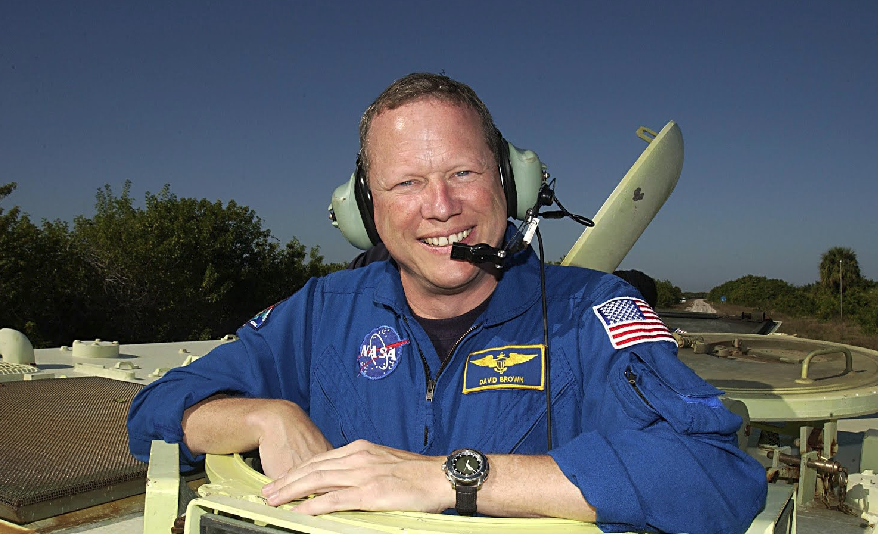David M. Brown
David McDowell Brown (April 16, 1956 – February 1, 2003) was a United States Navy captain and NASA astronaut. He died on his first spaceflight, when the Space Shuttle Columbia (STS-107) disintegrated during orbital reentry into the Earth's atmosphere. Brown became an astronaut in 1996 but had not served on a space mission prior to the Columbia disaster. He was posthumously awarded the Congressional Space Medal of Honor.
Education
Attended McKinley Elementary, Arlington, Virginia
Attended Swanson Middle, Arlington, Virginia
1974: Graduated from Yorktown High School, Arlington, Virginia
1978: Received bachelor of science degree in biology from the College of William and Mary
1982: Received a doctorate in medicine from Eastern Virginia Medical School
Organizations
Active in the Boy Scouts of America, where he achieved its second-highest rank, Life Scout.
Past President, International Association of Military Flight Surgeon Pilots
Associate Fellow, Aerospace Medical Association
Society of U.S. Naval Flight Surgeons.
Awards and honors
Brown, the 1986 recipient of the Navy Operational Flight Surgeon of the Year award, received numerous decorations including:
Qualification insignia
Personal decorations
The † symbol indicates a posthumous award.
Military career
Brown joined the U.S. Navy after his internship at the Medical University of South Carolina. Upon completion of flight surgeon training in 1984, Brown reported to the Navy Branch Hospital in Adak, Alaska, as Director of Medical Services. He was then assigned to Carrier Air Wing Fifteen which deployed aboard the aircraft carrier USS Carl Vinson in the Western Pacific. In 1988, Brown became the only flight surgeon in a 10-year period to be chosen for pilot training. He was ultimately designated a Naval Aviator in 1990 at NAS Chase Field in Beeville, Texas, ranking number one in his class. Brown was then sent for training and carrier qualification in the A-6E Intruder. In 1991, he reported to the Naval Strike Warfare Center at NAS Fallon, Nevada, serving as a Strike Leader Attack Training Syllabus Instructor and a Contingency Cell Planning Officer. Additionally, Brown was qualified in the F/A-18 Hornet and deployed from Japan in 1992 aboard USS Independence flying the A-6E with VA-115. In 1995, he reported to the U.S. Naval Test Pilot School at NAS Patuxent River, Maryland as their flight surgeon where he also flew the T-38 Talon.
Brown logged over 2,700 flight hours with 1,700 in high-performance military aircraft. He was qualified as the first pilot in NASA T-38 aircraft and held a Federal Communications Commission (FCC) issued Technician Class amateur radio license with the call sign KC5ZTC.
NASA career
Selected by NASA in April 1996, Brown reported to the Johnson Space Center in August 1996. He completed two years of training and evaluation and was qualified for flight assignment as a mission specialist. Brown was initially assigned to support payload development for the International Space Station, followed by the astronaut support team responsible for orbiter cockpit setup, crew strap-in, and landing recovery.
On April 21, 2001, Brown appeared on ESPN as an expert on g-force loading on the human body that led to the cancellation of the Firestone Firehawk 600 CART race.[1]
Brown flew aboard Space Shuttle Columbia on STS-107, logging 15 days, 22 hours, and 20 minutes in space from January 16 to February 1, 2003. The flight was a dedicated science and research mission. Working 24 hours a day, in two alternating shifts, the crew successfully conducted approximately 80 experiments. The mission ended abruptly on February 1, 2003, when Columbia's crew perished during entry, 16 minutes before the scheduled landing.
Personal life
As the lone unmarried member of the STS-107 crew, Brown had previously been romantically involved with NASA engineer Ann Micklos. The two ended their relationship shortly before the mission, but remained close friends until his death.[2] The crew of STS-107 had also formed a very close friendship in their training, and Brown had been preparing a videotape to commemorate once they returned from their mission. He is buried in Arlington National Cemetery.[3][4]
Tributes
The David M. Brown Planetarium
Asteroid 51825 Davidbrown was named in honor of Brown.
Lunar crater D. Brown is named after Brown.[5]
Brown Hall, in the Columbia Village apartments, at the Florida Institute of Technology is named after him.
He is the first person ever to be posthumously awarded the William & Mary Alumni Association's, Alumni Medal.
The Laurel B. Clark and David M. Brown Aerospace Medicine Academic Center, located at the Naval Aerospace Medical Institute, is named after him.
The Captain David Brown Aerospace and Medical Research Endowment was established in his memory to help deserving students attending Eastern Virginia Medical School.
The planetarium of Arlington Public Schools was renamed the David M. Brown Planetarium.[6]
The Dave Brown Memorial Park in Friendswood, Texas, is named after him.
The annual Astronaut Dave Brown Memorial gymnastics meet is held at the College of William & Mary in his honor, where Dave Brown was a gymnast.
Yorktown High School Crew Team Men's Varsity 8 boat name Captain David M. Brown - c. 2003
Circle Oil Hill Elementary of Circle USD 375 in Kansas grants a scholarship each year - David Brown Hopes & Dreams Scholarship. This scholarship was first awarded in 2005.
About Space Shuttle Columbia
Space Shuttle Columbia (OV-102) was a Space Shuttle orbiter manufactured by Rockwell International and operated by NASA. Named after the first American ship to circumnavigate the upper North American Pacific coast and the female personification of the United States, Columbia was the first of five Space Shuttle orbiters to fly in space, debuting the Space Shuttle launch vehicle on its maiden flight in April 1981. As only the second full-scale orbiter to be manufactured after the Approach and Landing Test vehicle Enterprise, Columbia retained unique features indicative of its experimental design compared to later orbiters, such as test instrumentation and distinctive black chines. In addition to a heavier fuselage and the retention of an internal airlock throughout its lifetime, these made Columbia the heaviest of the five spacefaring orbiters; around 1,000 kilograms (2,200 pounds) heavier than Challenger and 3,600 kilograms (7,900 pounds) heavier than Endeavour. Columbia also carried ejection seats based on those from the SR-71 during its first six flights until 1983, and from 1986 onwards carried an imaging pod on its vertical stabilizer.
During its 22 years of operation, Columbia was flown on 28 missions in the Space Shuttle program, spending over 300 days in space and completing over 4,000 orbits around Earth. While it was seldom used after completing its objective of testing the Space Shuttle system, and its heavier mass and internal airlock made it less than ideal for planned Shuttle-Centaur launches and dockings with space stations, it nonetheless proved useful as a workhorse for scientific research in orbit following the loss of Challenger in 1986. Columbia was used for eleven of the fifteen flights of Spacelab laboratories, all four United States Microgravity Payload missions, and the only flight of Spacehab's Research Double Module. The Extended Duration Orbiter pallet was used by the orbiter in thirteen of the pallet's fourteen flights, which aided lengthy stays in orbit for scientific and technological research missions. Columbia was also used to retrieve the Long Duration Exposure Facility and deploy the Chandra observatory, and also carried into space the first female commander of an American spaceflight mission, the first ESA astronaut, the first female astronaut of Indian origin, and the first Israeli astronaut.
At the end of its final flight in February 2003, Columbia disintegrated upon reentry, killing the seven-member crew of STS-107 and destroying most of the scientific payloads aboard. The Columbia Accident Investigation Board convened shortly afterwards concluded that damage sustained to the orbiter's left wing during the launch of STS-107 fatally compromised the vehicle's thermal protection system. The loss of Columbia and its crew led to a refocusing of NASA's human exploration programs and led to the establishment of the Constellation program in 2005 and the eventual retirement of the Space Shuttle program in 2011. Numerous memorials and dedications were made to honor the crew following the disaster; the Columbia Memorial Space Center was opened as a national memorial for the accident, and the Columbia Hills in Mars' Gusev crater, which the Spirit rover explored, were named after the crew. The majority of Columbia's recovered remains are stored at the Kennedy Space Center's Vehicle Assembly Building, though some pieces are on public display at the nearby Visitor Complex.

